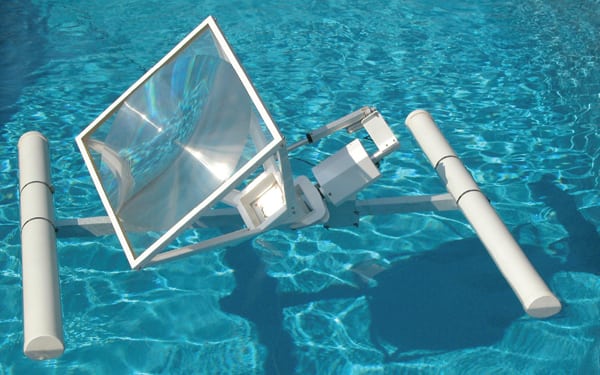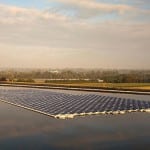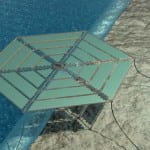Like most forms of generation, solar power has its disadvantages. Two cited most by critics of photovoltaic (PV) or concentrating solar power facilities are that they require large expanses of land and that solar cell fabrication and maintenance costs are high. Several companies have been assessing a new approach to tackling these factors: installing solar plants on water. Two projects in recent months have garnered government and industry backing, indicating growing interest in the concept.
Aquasun, developed by a collaboration between Israeli firm Solaris Synergy and France’s EDF Group, is a PV array that uses 200-kW modules that can be installed on existing industrial water basins. Developers say that costs will be reduced because Aquasun uses a mirror-based concentrating system, cutting down on the number of panels needed. It also employs a “creative cooling system” using the water on which the panels float so it can use cheaper silicon cells. The floating solar array has environmental benefits, too, the developers claim: It works as a “breathing surface through which oxygen can penetrate” the water, ensuring the viability of underwater life.
The project has gained the support of Eureka, a 39-member intergovernmental network that promotes market-oriented research and development and innovation projects. The Israeli Ministry of Industry, Trade and Labor has also pitched in.
The project’s design phase ended in March 2010, and fabrication of a prototype is now under way. The implementation phase is slated to begin in September 2011 on waters near a hydropower facility in Cadarache, southeast France. The prototype will operate onsite for nine months, and researchers hope the technology will be ready for market by June 2012.
In late March, meanwhile, Australian solar company Sunengy Pty Ltd. entered into a partnership with Tata Power, India’s largest integrated private power utility, to build a pilot plant for its Liquid Solar Array (LSA). The project essentially uses PV concentrators that float on water, mounted on anchored rafts (Figure 7).
 |
| 7. Floating a ray. Australia’s Sunengy recently partnered with India’s Tata Power to pilot a floating concentrating photovoltaic module. A thin plastic focusing concentrator lens rotates slowly to track the sun both daily and seasonally. A minimal number of silicon (or other types of) photovoltaic cells are housed in a container that sits in the water where the cells are kept cool through convective heat flow to the surrounding water. Courtesy: Sunengy |
Inventor Phil Connor, who is also Sunengy’s chief technology officer, claims that an LSA installation located with or combined with hydro dams could match the power output of a typical hydro plant, using less than 10% of the dammed water’s surface area. The solar installation could thereby supply an additional six to eight hours’ worth of power per day. LSA effectively turns a dam reservoir into a very large battery, he said, pointing to company modeling that shows that a 240-MW LSA system could increase annual energy generation at the Alqueva hydropower plant in Portugal by 230%.
Construction of a pilot in India will begin in August this year. Sunengy plans to establish a larger LSA system in Australia’s Hunter Valley in mid-2012 before going into full production.
—Sonal Patel is POWER’s senior writer.










